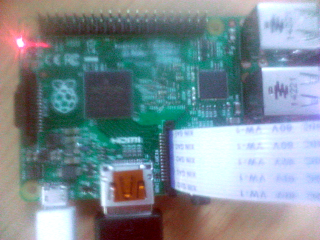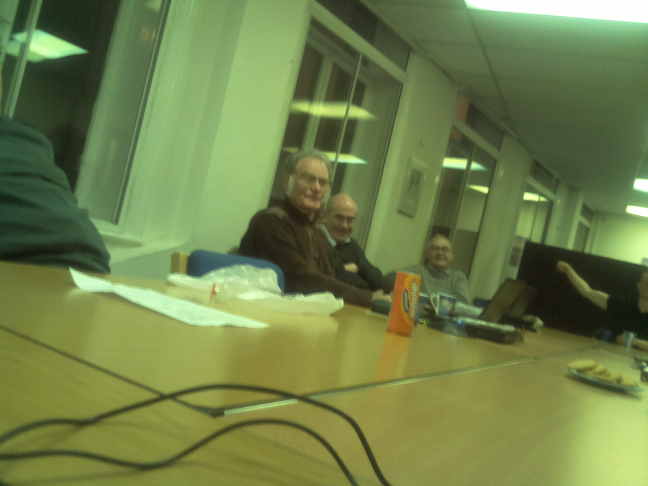February 9 2015: Raspberry Pi 2, APL and more snooping
Kriss and Shi demonstrated the Raspberry Pi 2; [ ] (the ribbon connection is to the camera).
] (the ribbon connection is to the camera).
It is faster and more stable, the power issues have been fixed and it has four USB sockets. However, the separate composite socket has gone and it is obvious that more work needs to be done on the video drivers. A modern TV with a USB socket can power it; Kodi works with it and you can use the HDMI connection to set up a simple remote control for a modern TV. With USB power you can set up a web radio. He demonstrated the camera module by taking a picture of the group.
[ ]
]
Kriss then demonstrated Swanky Paint running on the Raspberry Pi. Swanky Paint runs from the command line without calling X windows using just OpenGL but some operations take a lot longer than they should; Kriss thinks that is not a GPU problem but an OpenGL driver problem which will be cured when they have proper OpenGL drivers for the Raspberry Pi.
Darren demonstrated APL using the Try APL website.
David S first directed us to The “Alice Isn’t Here” collection and the link to Seeing networks and then the Level 3 network map. You can open the Javascript console and type map.maxZoom = 17; map.zoom = 17; then drag the map so you can zoom in all the way.
He also showed us a photograph of four cabinets symmetrically arranged at the end of a Level 3 fibre segment in Leeds.
Then he brought us up-to-date with the latest snooping revelations available from the Citizenfour Snowden Documentary High Definition (7-Zip MP4) (3.6GB) (or Citizenfour Snowden Documentary (7-Zipped MP4) (1.2GB)).
He pointed out another delicious bit of GCHQ naming, MY LOVELY HORSE, as featured in Father Ted, which monitors and indexes the conversations of hackers on social media, and the BADASS programme to monitor smartphones.
He also drew attention to the fact that the Regin keylogger module had a previous standalone existence as the QWERTY keylogger module.
Finally, there was a reminder of the next Bradford CoderDojo on Saturday, 28 February 2015.
Past Meetings